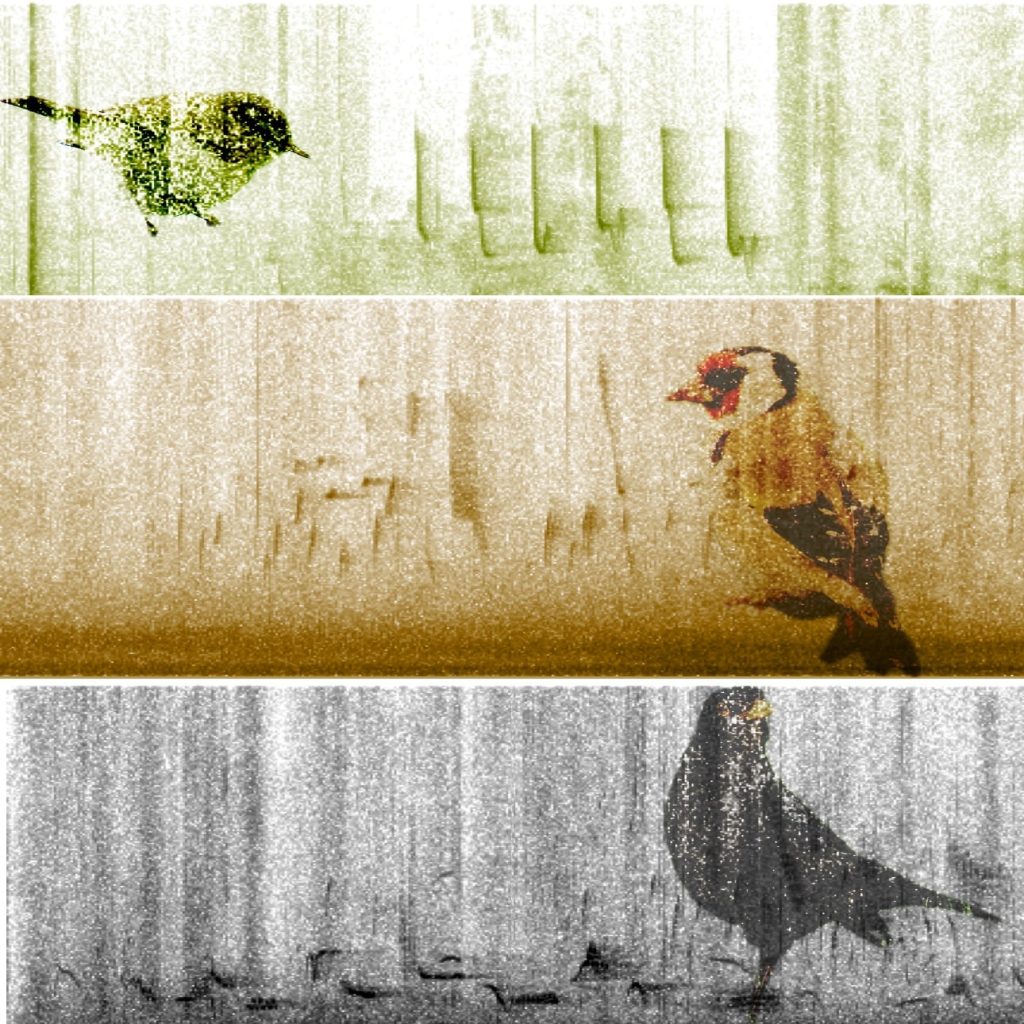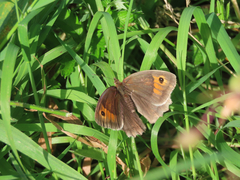@manton is offering free blog hosting for teachers & nurses on micro.blog. Micro blog is fully featured, should be especially interesting to teachers who want to own the content they share on social media. Micro.blogs cross posting is peerless. Of course for Scot’s teachers I’d recommend Glow.
Kind: Articles
Likes Curate your own newspaper with RSS by .
Readers no longer see news articles from the journalists they chose to follow on Twitter as the site downranks any posts that link offsite. When they search on Google, they’re bombarded with error-ridden AI facsimiles before reaching the higher-quality underlying work.
I enjoyed listening to the podcast version, feeling smug as a long time RSS reader. Spells out lots of new reasons for using RSS. Watching Ewan Macintosh use NetNewsWire on a train, before Wifi on trains, before smart phones, changed my digital life. I though then it might change everyone’s, maybe still will?
Guess the cubomania

A couple of days ago I saw a “guess the cubomania” challenge from Theo. I’ve had an interest in Cubomania in the past and played around with the idea a bit. After a chat with D. who gave me a few engravers I googled a bit and guessed, wrongly, Goya.
Next I thought to ask ChatGPT. It suggested it could match by image matching techniques, gave me a fairly obviously wrong first row and ran out of credit.
I then thought to ask Claude to make me an interactive page where I could drag things around. It made a couple of not very good attempts.
I was thinking about a better prompt, when I remembered and asked:
Could we use the whole image for each piece but ‘crop’ it with css?
Claude replied:
Brilliant idea! Yes, we can absolutely use CSS to create a “window” effect where each piece shows only its portion of the full image. This is much more elegant than trying to extract individual pieces.
I was flattered1 and when Claude came up with another fail I decided to abandon AI and DIY. This turned out a lot better. I started by remembering background-position and finding interact.js . The last time I did any drag and drop I dimly recall some sort of jQuery and a shim for mobile/tablets. interact.js did a grand job for my simple needs. It was probably overkill as it seems to do a lot more.
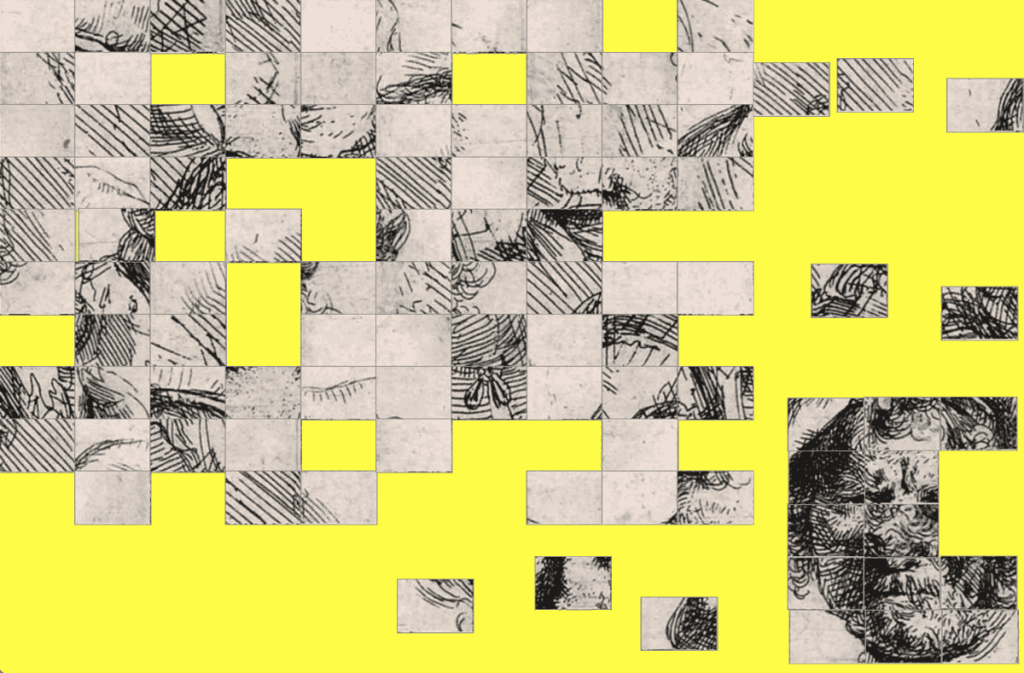
It is pretty simple stuff, but potentially a lot of fun, different images, making cubomania puzzles who knows. I did extend it a bit, learning about localStorage (to save any progress) and the dialogue tag. All without AI but few visits to HTML reference – HTML | MDN and the odd search.
I had a lot of fun with this, more than if I had just managed to get either of the AIs it to do the whole thing. What it did make me think of is that AI chat was useful for working out what I wanted to do and how to do it. I could probably have done that bit too all by myself. Usually I just start messing about and see what happens. This points to a bit of planning, or maybe typing some notes/pseudocode/outline might work for me when I am playing.
- See: The machine began to waffle – and then the conductor went… In the paper the title was Artificial Intelligence: The Technology that lies to say yes. ↩︎
The Featured Image of this post was generated by ChatGPT in response to ” I want an image of a chatbot character chatting with a person, friendly, helpful & futuristic.” It has been run through Cubomania Gif!
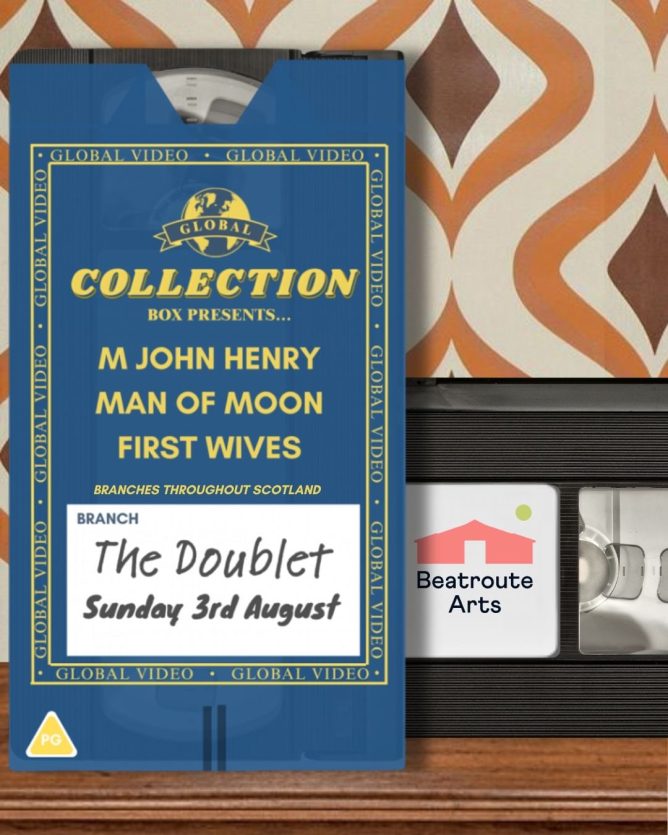
Collection Box Presents…(Glasgow) Music night for Beatroute Arts with M. John Henry, Man of Moon & First Wives. Sunday, August 3 · 7:30 – 10:30pm The Double Bar. Tickets £6.13 & up all proceeds going to Beatroute Arts:
a community-led charity based in North Glasgow that offers free programmes of arts based activity to alleviate lack of free learning provision, mental and physical ill health brought about by poor living standards and social isolation.
Organised by My daughter & partner, should be relaxed and intimate evening.
We had a walk up to Greenside today and spotted quite a few species of butterfly.
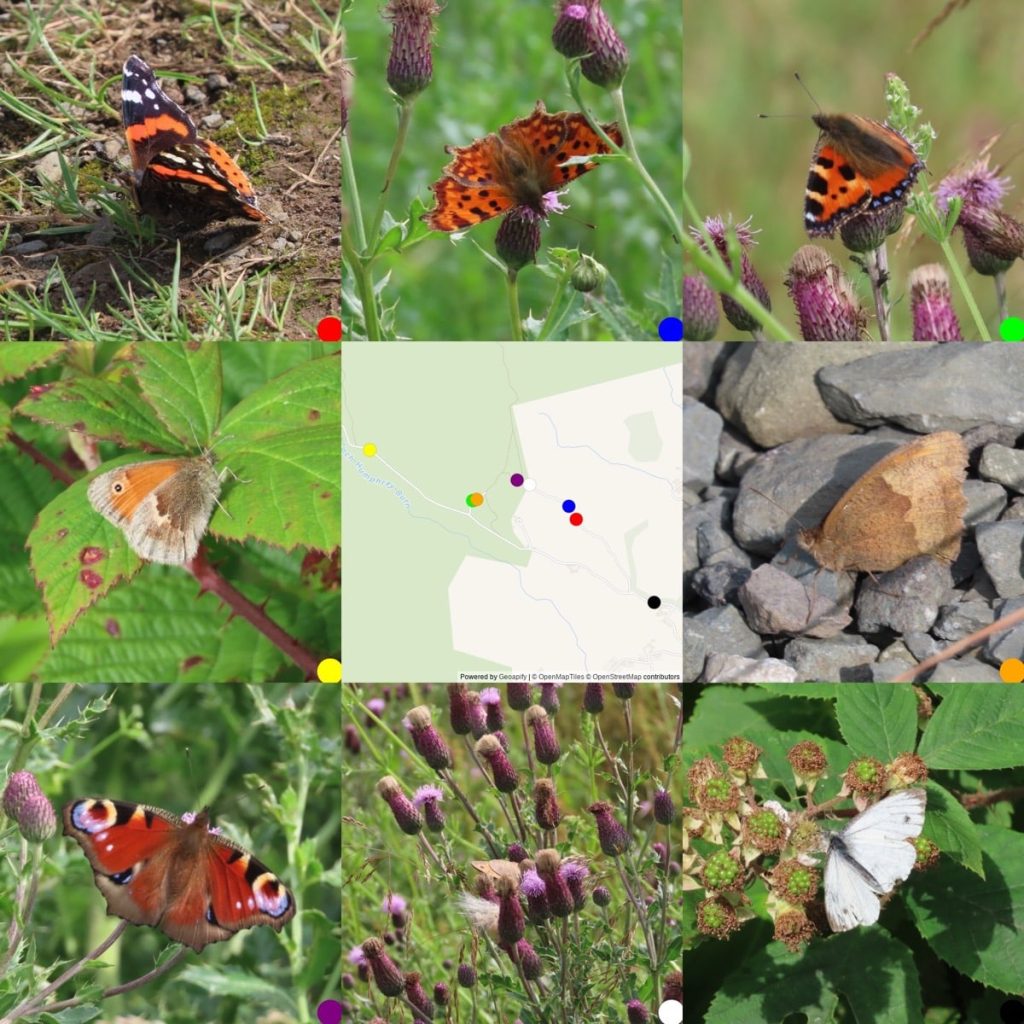
From TR: Red Admiral; Comma; Small Tortoiseshell ; Small Heath; Map; Meadow Brown; Peacock; Another Meadow Brown; Green-veined White.
Read: In Ascension by Martin MacInnes ★★★★★ 📚
My goodness what an interesting book, from biology to spaceflight with climate change & corporate greed hanging over everything. Plenty of mystery, some from my own lack of knowledge some written in (or out).
Turtles:
Lifting the bulk from below, tipping forward, using the momentum of the minor collapse as a motive force, a means of going on.
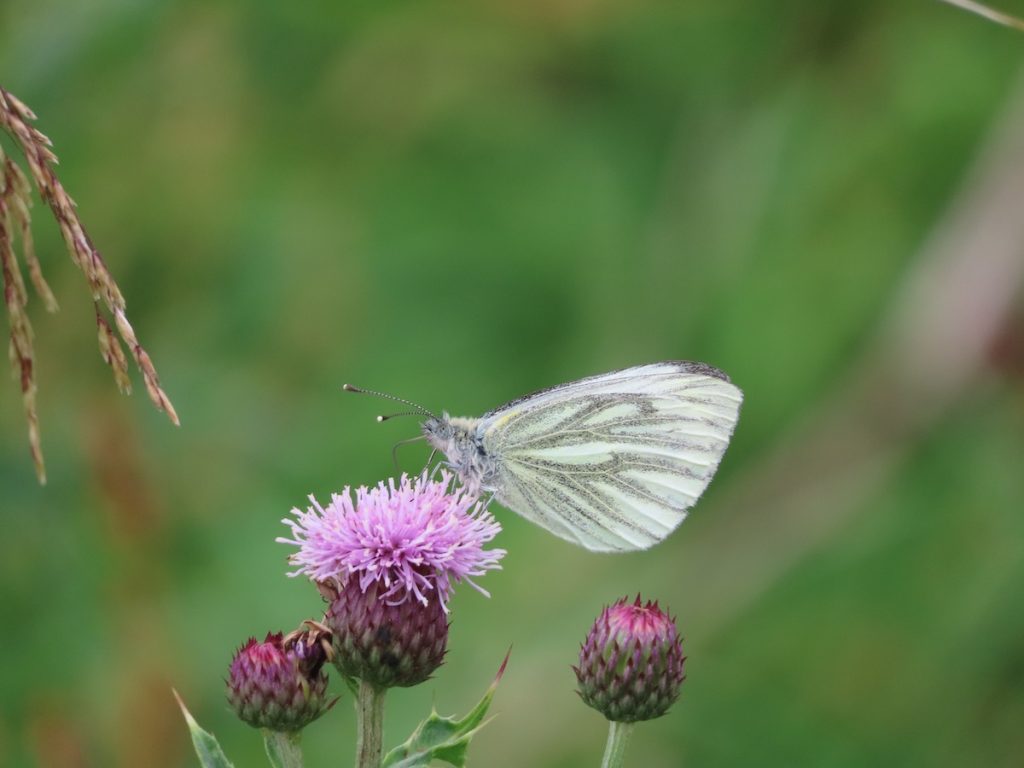
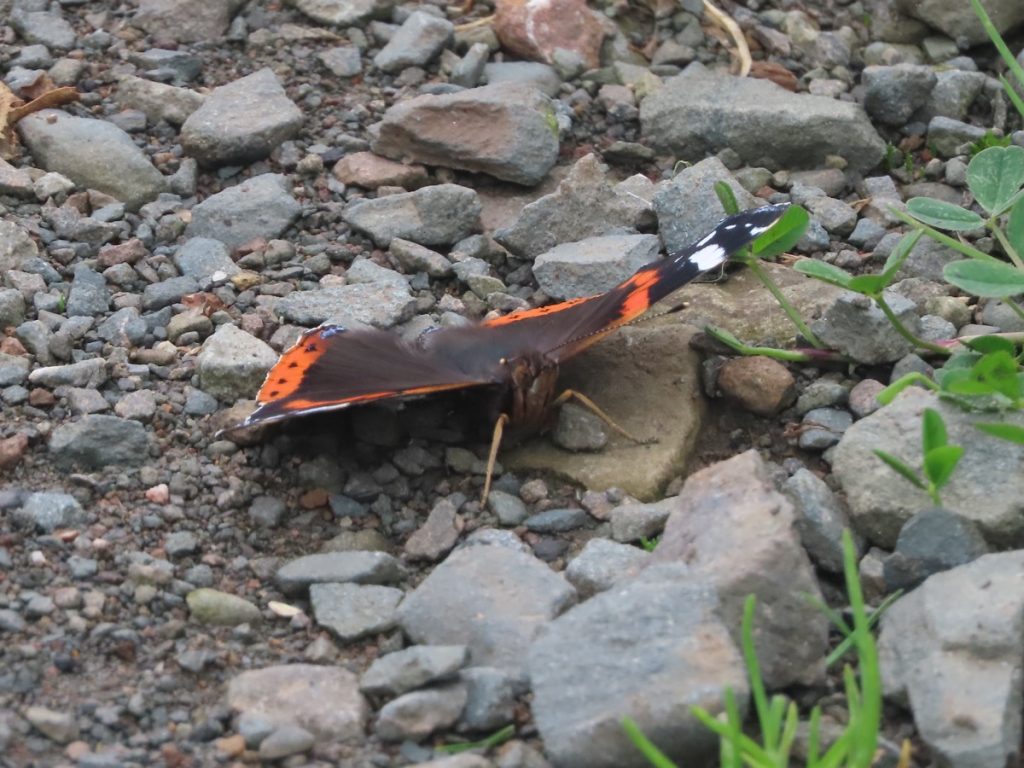
Two Butterflies on a dull dry afternoon sandwiched between a wet morning and a wet evening.
iNaturalist Observations & a little AI

I’ve been playing a little with WordPress yesterday. A while back I made the very simplest plugin to display my latest iNaturalist submissions. iNaturalist has a API so I made a short code that would then use JavaScript to pull in the pictures once the page loaded.
The only problem with that is that when the page loaded it just displayed a div with ‘loading’ then replaced that with the images when a script pulled that in. This appeared in the RSS feed too.
I thought that it might be better to do this server side so the images would show in an RSS feed.
This worked out ok once I had remembered lines need to end in semi-colons in php. It was still very basic so I ran it past Claude.ai and asked for security and caching advice. It made a couple of suggestions which I read up a little about and implemented.
I’ve tried using AI for a few code ideas and I am beginning to see what does and doesn’t work. What doesn’t work for me is to ask it to build a whole idea. This has nearly always ended up in problems which seem to loop around. What does work is to ask for somethings specific. In this case I uploaded the plugin to Claude and asked it to find any security problems. It did and suggested some fixes. I am sure that these are simple things that any WordPress developer would carry out without thinking about.
I’ve also found getting basic information around a function works well with AI. For example Claude suggested using the transient to cache the data from the API. Asking ChatGPT to explain transient gave me a quick handle on the function. (I am sure Claude would have explained too).
Anyway I have made some progress.
This was a good day:
The above produced with this shortcode:
[[inaturalist user="troutcolor" on="2024-07-30"]]
I’d now like to add some more ideas: names looking a little prettier than the description tooltip, maybe a lightbox view with more information and a link to iNaturalist. But I am not in any rush.

